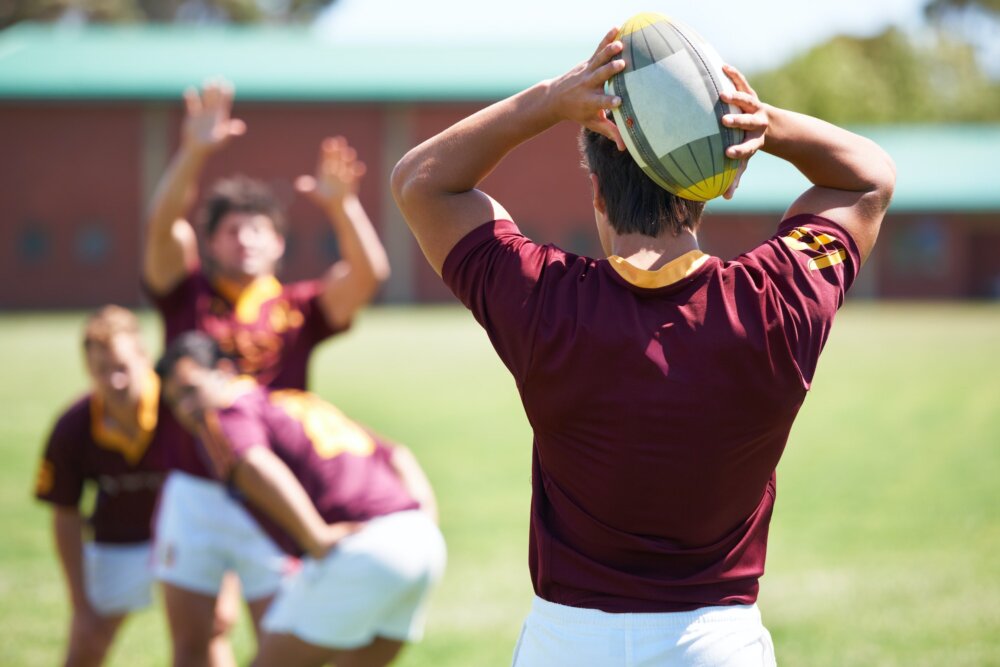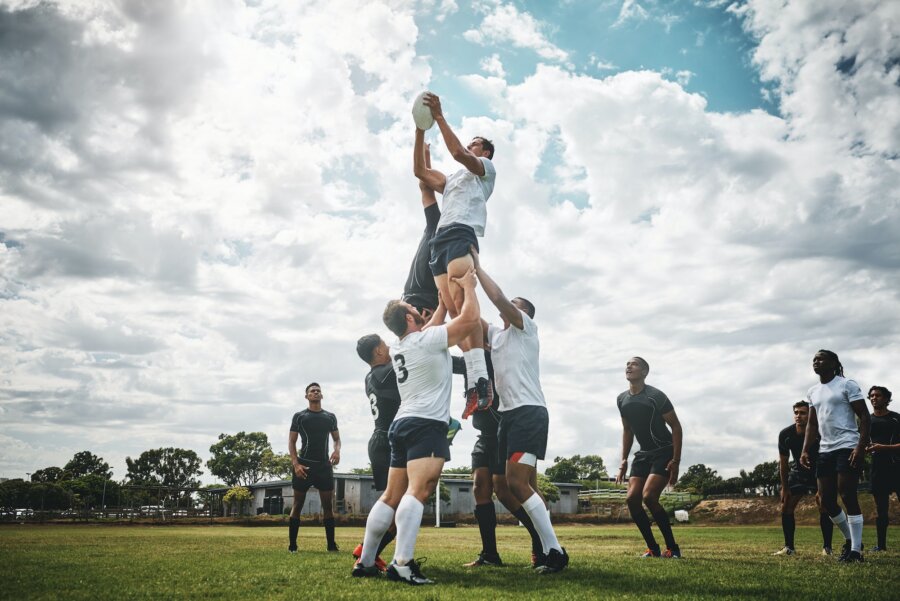Reds

The Queensland Reds are a rugby union team hailing from Brisbane, in the Australian state of Queensland. The team currently competes in the Southern Hemisphere’s Super Rugby competition, something they have been a part of, in its various formats, since its inception in 1996. This article will detail the club’s storied history, their triumphs within Super Rugby, and provide information about the current players, management, kit, logo and more.
Brief History
The early days of rugby in Queensland were marked by the formation of the first organised club competition in 1884. Formalising the competition further, the Hospital Cup was established in 1899 and remains a significant annual trophy for Queensland Premier clubs. However, rugby union fell out of favour in Queensland in the early 1900s, particularly with the rise of rugby league, as it provided better access to representative teams than union. The QRU banned players for participating in rugby league competitions in 1908, thereby promoting the growth of rugby league in Queensland.
The decline of rugby union was compounded by the First World War which saw major clubs and GPS schools transitioning to rugby league. These events led to the disbandment of the Queensland Rugby Union in 1919. The QRU was re-established in 1928, with the return of GPS competition and major clubs to rugby union, but it was marred by controversies among league officials.
Despite the trials, rugby union fought its way through the Second World War, and the 1960s and 1970s saw the establishment of the Queensland Junior Rugby Union in 1961 and the Country Rugby Union in 1963. The QRU secured its use of Normanby Oval from BGS Board of Trustees in 1950, and in 1966 it moved to Ballymore, a facility which became the spiritual home of Queensland Rugby Union, and which was granted to the QRU by the state government.
In 1980, the QRU employed Terry Doyle as its first Chief Executive Officer, and under his leadership, the organisation grew from one person to 32 by 1996. Despite an office location change in 1997, the QRU administration staff returned to Ballymore in 2004, marking the reunion of the entire organisation.
The Super Rugby Era
Between 1996 and 2005, the Queensland Reds were one of three teams from Australia in the Super 12 competition, alongside the New South Wales Waratahs and the ACT Brumbies. The Reds finished the 1996 and 1999 seasons as minor premiers, meaning that they finished first in the league standings before the commencements of the finals, but failed to win the overall title.
Although the Queensland Reds found little in the way of major success during the Super 14 era between 2006 and 2010, it wouldn’t be long before they won their first title.
When the current format of Southern Hemisphere rugby union, Super Rugby, was introduced in 2011, the Reds beat the Crusaders at the Suncorp Stadium in the grand final and were crowned champions. This was a monumental achievement for the team as it was their first trophy in 14 years.
Due to COVID-19 travel restrictions, Super Rugby was put on hold, but that didn’t mean that rugby stopped altogether in the Southern Hemisphere. The restrictions still allowed for Australian teams to compete against each other on home soil, and thus the Super Rugby AU competition was formed.
In the inaugural season, the Reds lost out on the top honours to the Brumbies, who narrowly defeated the Reds in the final. The following year, however, saw the Reds reign supreme, defeating the Brumbies in the final to claim the 2021 title.

Rivalries
Queensland Reds’ most fierce rivalries are with other Australian teams in Super Rugby, including the Brumbies, Western Force, Waratahs, and Melbourne Rebels. However, the most renowned of such rivalries is undoubtedly the interstate clash between the Queensland Reds and the New South Wales Waratahs. This colossal match usually pulls in the highest attendance whenever the Reds host it, with the game occasionally acting as the ultimate curtain-raiser to the season. The winner of the Queensland/New South Wales match is awarded the prestigious Bob Templeton Cup.
Former Queensland captain John Eales famously quoted former Australian international Mark Loane, describing the intense rivalry between the Queensland and New South Wales teams, as being akin to fighting with your brother in the backyard. These two Australian rugby giants have played over 270 matches, with New South Wales leading the win tally with 170 wins. Queensland currently hold 80 wins in this rivalry. Since the inception of professional Super Rugby in 1996, they have played 17 times, with Queensland claiming victory 9 times, New South Wales claiming 7, and one match ending in a draw.
Colours and Logo
The Queensland Reds sport a maroon home shirt, with white shorts and maroon socks. These are the traditional colours of the club, which have featured in their kits since the late 19th century. Their logo comprises a large ‘Q’, symbolising Queensland of course, and a koala bear (native to Australia) which sits inside of the letter.
Stadium
The Suncorp Stadium in Milton, Brisbane, is the home of the Queensland Reds. The Reds moved to the 52,500-seat venue in 2006, when Super 12 rugby expanded into Super 14 rugby. At the time, it was seen as a marked investment in the future of Queensland rugby, with the stadium boasting world-class facilities and easy access for all, ensuring the growth of the sport within the region. This sentiment has been furthered by efforts to raise the team’s profile outside of Brisbane, which has seen the club playing numerous pre-season games at the Gold Coast, Sunshine Coast, and Darling Downs regions.
Head Coach
The current head coach of the Queensland Reds is Brad Thorn, a former New Zealand international and World Cup winner. Thorn has been at the club since 2018, making him their second longest serving head coach in their history.
Current Squad
The current Queensland Reds squad boasts an impressive 13 internationally capped players. Here is a list of the current roster in full:
Props
- Sef Fa’agase
- Harry Hoopert
- Zane Nonggorr
- Peni Ravai
- Phransis Sula-Siaosi
- Taniela Tupou
- Dane Zander
Hookers
- Richie Asiata
- George Blake
- Matt Faessler
- Josh Nasser
Locks
- Angus Blyth
- Wilson Blyth
- Lopeti Faifua
- Luke Jones
- Ryan Smith
- Connor Vest
- Jake Upfield
Loose forwards
- Connor Anderson
- Fraser McReight
- Keynan Tauakipulu
- Seru Uru
- Harry Wilson
- Liam Wright
Scrum-halves
- Spencer Jeans
- Tate McDermott
- Kalani Thomas
Fly-halves
- Lawson Creighton
- Tom Lynagh
- James O’Connor
Centres
- Josh Flook
- Isaac Henry
- Hunter Paisami
- Jordan Petaia
Wingers
- Jock Campbell
- Filipo Daugunu
- Suliasi Vunivalu
Fullbacks
- Floyd Aubrey
- Mac Grealy
- Taj Annan
